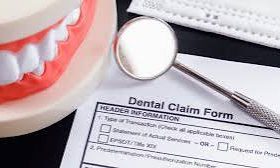Diving can be an exhilarating experience, but having the right gear is crucial for both safety and enjoyment. For beginners, choosing the right equipment can seem overwhelming. This guide breaks down the essential diving gear you’ll need to get started.
Mask
A mask is a fundamental piece of diving gear, allowing you to see clearly underwater. When choosing a mask, consider the following:
- Fit and Comfort: The mask should form a good seal around your face. Try on several masks to find one that fits well and is comfortable.
- Lens Type: Look for masks with tempered glass lenses for durability and clarity.
- Anti-Fog Features: Opt for masks with anti-fog coatings or consider using an anti-fog solution.
Snorkel
A snorkel enables you to breathe while floating on the surface, making it easier to prepare for your dive. Here’s what to consider:
- Types: Basic snorkels are simple and effective, while those with purge valves allow for easier clearing of water.
- Comfort: Choose a snorkel that feels comfortable in your mouth and is easy to use.
Fins
Fins help you move efficiently through the water. Key points to consider include:
- Types: Open-heel fins are adjustable and suitable for varying water temperatures, while full-foot fins are often used in warmer waters.
- Fit and Comfort: Ensure the fins are the right size and fit comfortably to avoid blisters and discomfort.
Wetsuit or Drysuit
Wetsuits and drysuits provide thermal protection. Here’s how to choose:
- Wetsuits: Available in full and shorty designs, they come in various thicknesses. Choose based on the water temperature you’ll be diving in.
- Drysuits: Ideal for colder waters, drysuits keep you completely dry and provide extra insulation.
- Fit and Comfort: The suit should be snug but allow for easy movement.
Buoyancy Control Device (BCD)
A BCD helps you control your buoyancy underwater and stay comfortable. When selecting a BCD, consider:
- Types: Jacket-style BCDs are popular for their ease of use, while back-inflation BCDs provide a more streamlined feel.
- Features: Look for features like integrated weights and multiple pockets for convenience.
Regulator
The regulator is essential for breathing underwater. Important factors include:
- Types: Balanced regulators offer consistent airflow at different depths, while unbalanced regulators are simpler but less consistent.
- Maintenance and Care: Regular servicing is necessary to ensure reliable performance and safety.
Tank
The tank holds the air you breathe while diving. Consider the following:
- Types: Aluminium tanks are lightweight, while steel tanks are more durable but heavier.
- Size and Weight: Choose a tank size that fits your diving needs and comfort level.
Dive Computer or Depth Gauge
A dive computer or depth gauge helps you monitor your dive profile. Here’s what to look for:
- Features: Dive computers provide detailed data, including depth, time, and decompression limits. Some also integrate with your air supply.
- Choosing the Right Device: Select a computer based on your diving plans and budget.
Accessories
In addition to the essentials, several accessories can enhance your diving experience:
- Wetsuit Hoods, Gloves, and Boots: These items offer additional protection and warmth.
- Dive Knife: A useful tool for safety and emergency situations.
Conclusion
Equipping yourself with the right diving gear is key to a safe and enjoyable diving experience. By investing in quality equipment and ensuring a proper fit, you’ll be well-prepared to explore the underwater world. If you have any questions or need recommendations, feel free to leave a comment below!








Leave a Reply